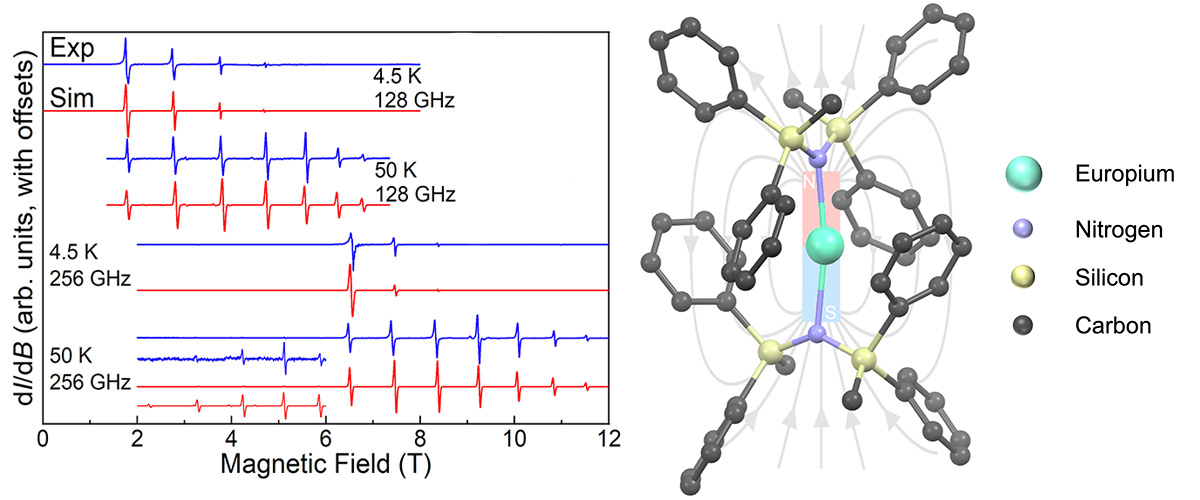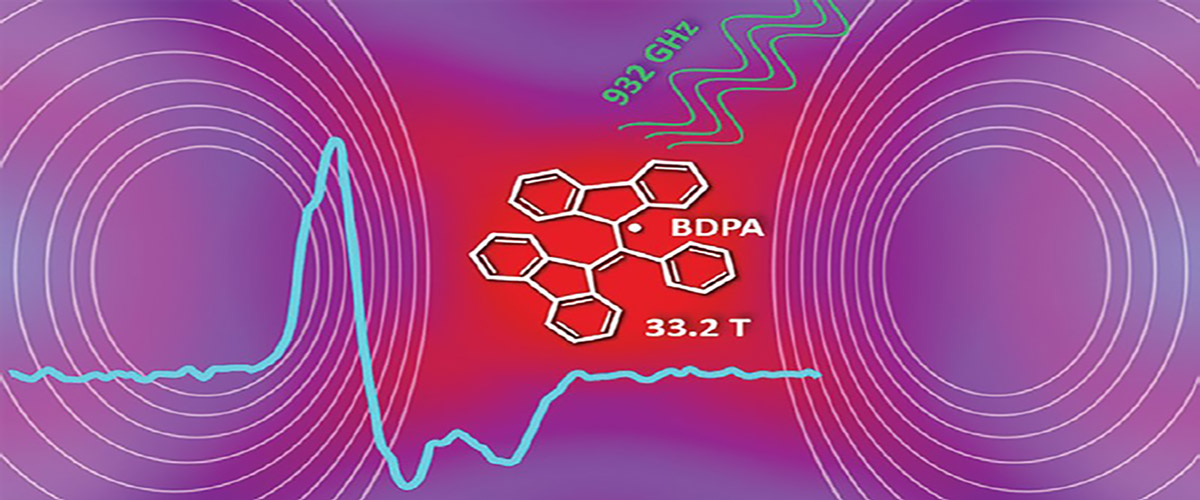
April 14, 2025
A two-dimensional triangular network of europium ions connected by organic pyrazine molecules is shown to possess the perfect ingredients for efficien…

January 14, 2025
Molecules containing the Earth-abundant metal, titanium, are widely used as catalysts for production of polymers such as polyethylene, polycarbonates …

October 14, 2024
Previous work at the MagLab demonstrated that it is possible to design molecules containing a LuII ion such that its lone unpaired electron is shielde…

June 20, 2024
This study reports the first example of a europium single-molecule magnet – a molecule that can retain alignment of its ‘North’ and ‘South’ poles at l…

January 18, 2024
Studying a mysterious magnetic material (Na2Co2TeO6) that could be used in future quantum computing schemes, researchers revealed the crucial role mic…

August 11, 2023
New instrumentation allows electron magnetic resonance experiments to be performed in the lab’s flagship 36 T Series-Connected Hybrid magnet, unlockin…

January 23, 2023
High-magnetic-field time-resolved electron magnetic resonance was used to probe the unusual manganese/iron complex that is believed to play a role in …

September 12, 2022
Electron spin coherence was enhanced through engineering of so-called clock transitions in molecular magnets, an advance in quantum computing strategi…

May 16, 2022
Using far-infared magnetospectroscopy in high magnetic fields, scientists probed coupled electronic and vibrational modes in a molecular magnet that a…

February 09, 2022
High-magnetic-field, high-frequency electron paramagnetic resonance demonstrates how coordination chemistry can be leveraged to stabilize a desired el…

June 23, 2021
High-resolution electron magnetic resonance studies of the spin-wave spectrum in the high-field phase of the multiferroic Bismuth ferrite (BiFeO3) rev…

February 11, 2021
An exciting advance of interest to future molecular-scale information storage. By using the uniquely high frequency Electron Magnetic Resonance techni…

October 06, 2020
This work reports the first observation of the dynamical generation of a spin polarized current from an antiferromagnetic material into an adjacent no…

April 23, 2020
This study reports the first transition metal compounds featuring mixed fluoride–cyanide ligands. A significant enhancement of the magnetic anisotropy…

January 31, 2020
Electron spin resonance work shows how transition metal can retain quantum information, important work on the path to next-generation quantum technolo…

December 12, 2019
This finding demonstrates a path forward to dramatically enhance sensitivity for molecule concentration measurement by magnetic resonance using Overha…
![Scientists studied the copper-based compound [Cu(pyrimidine)H2O4] SiF6 H2O. Repeating units of four copper ions (see above) create corkscrew-like chains with intriguing magnetic properties.](/media/ayslgnyz/june2019_emr_chiral_staggered_chain.jpg)
June 20, 2019
The findings contribute to scientists' understanding of magnetic materials that could point the way to future applications.

January 29, 2019
Insights into the structure and movement of T cell surface proteins could lead to new ways to fight cancers, infections and other diseases.

August 21, 2018
This work investigates a series of oxoiron complexes that serve as models towards understanding the mechanism of catalysis for certain iron-containing…

April 17, 2018
In this study, researchers added a low concentration of the endohedral metallofullerene (EMF) Gd2@C79N to DNP samples, finding that 1H and 13C enhance…

February 26, 2018
This high-field EPR study of the H-Mn2+ content in the bacterium Deinococcus Radiodurans provides the strongest known biological indicator of cellular…